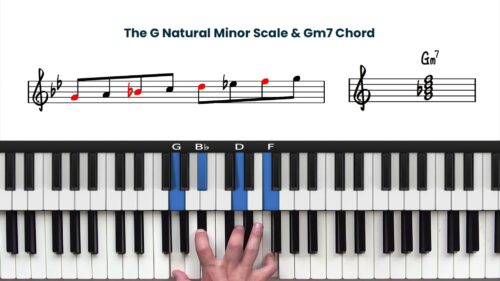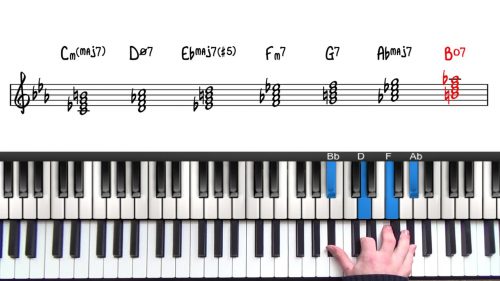“In a Sentimental Mood” For Beginners
Welcome to the 2nd module in our course on jazz modulations for beginners. In this lesson we focus on the A section of Duke Ellington’s classic jazz standard “In a Sentimental Mood”. This tune, much like “Body and Soul” from the 1st module, features a distinctive modulation when transitioning from the A section to the B section.
Understanding the Minor Line Clichè
The “minor line cliché” is a key harmonic feature in the A section of “In a Sentimental Mood”. In the first 2 bars we move through the chords D-, D-maj7, D-7, and D-6. This pattern is a hallmark of jazz harmony and creates a smooth, flowing movement.
-
D-: The opening chord that establishes the minor tonality.
-
D-maj7: Adding a major 7th to the minor triad introduces a haunting, unresolved feel.
-
D-7: This chord brings us back to a more stable minor chord.
-
D-6: The final chord in this sequence, softening the sound by lowering the 7th to the 6th.
One key to mastering this progression is learning to navigate the transitions smoothly. A useful tip for beginners is to drop the root of the D- triad by a half step to move into D-maj7 (D-/C#), then another half step to move to D-7 (D-/C), and finally another half step to move to D-6 (D-/B).
This voicing approach is simple for beginner students and ensures a smooth and connected sound through the progression.
Minor 251 Progression & Spread Voicings
As we progress, we encounter more complex chords such as E-7♭5 and A7♭9 which create a minor 251 progression into the tonic D-. The minor 251 progression adds richness and depth to the harmony.
To add more depth to our playing we use the 2-handed spread voicing technique to navigate the minor 251 progression. This technique involves spreading the notes of the chord over 2 hands so that the chord tones are spread out over more than 1 octave on the piano.
Spread voicings are an effective way to create a fuller and more balanced sound and also create an interesting contrast in texture to the descending bass note sequence that we used to navigate the minor line clichès.
Practice Tips
-
Smooth Transitions: Focus on moving smoothly between D-, D-maj7, D-7, and D-6. Repeat the same process for the G- sequence.
-
Spread Voicings: Use spread voicings to create a more balanced and resonant sound. Spread voicings also prevent your left hand chord voicings from overlapping with the melody.
-
Practice Slowly: Start at a slow tempo, focusing on each chord change and as you become more comfortable, gradually increase the speed.
-
Harmony Blocks: Identify harmonic patterns such as the 2-5-1 progression (G-7 to C7 to F-maj7) and the minor line cliché. Recognising these blocks will help you to navigate and arrange lead sheets more effectively.






